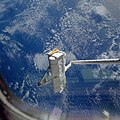
STS-51-F was the 19th flight of NASA's Space Shuttle program and the eighth flight of Space Shuttle Challenger. It launched from Kennedy Space Center, Florida, on July 29, 1985, and landed eight days later on August 6, 1985.

Spacelab was a reusable laboratory developed by European Space Agency (ESA) and used on certain spaceflights flown by the Space Shuttle. The laboratory comprised multiple components, including a pressurized module, an unpressurized carrier, and other related hardware housed in the Shuttle's cargo bay. The components were arranged in various configurations to meet the needs of each spaceflight.

STS-2 was the second Space Shuttle mission conducted by NASA, and the second flight of the orbiter Columbia. The mission, crewed by Joe H. Engle and Richard H. Truly, launched on November 12, 1981, and landed two days later on November 14, 1981. STS-2 marked the first time that a crewed, reusable orbital vehicle returned to space. This mission tested the Shuttle Imaging Radar (SIR) as part of the OSTA-1 payload, along with a wide range of other experiments including the Shuttle robotic arm, commonly known as Canadarm. Other experiments or tests included Shuttle Multispectral Infrared Radiometer, Feature Identification and Location Experiment, Measurement of Air Pollution from Satellites, Ocean Color Experiment, Night/Day optical Survey of Lightning, Heflex Bioengineering Test, and Aerodynamic Coefficient Identification Package (ACIP). One of the feats accomplished was various tests on the Orbital Maneuvring System (OMS) including starting and restarting the engines while in orbit and various adjustments to its orbit. The OMS tests also helped adjust the Shuttle's orbit for use of the radar. During the mission, President Reagan called the crew of STS-2 from Mission Control Center in Houston.

STS-7 was NASA's seventh Space Shuttle mission, and the second mission for the Space Shuttle Challenger. During the mission, Challenger deployed several satellites into orbit. The shuttle launched from Kennedy Space Center on June 18, 1983, and landed at Edwards Air Force Base on June 24, 1983. STS-7 carried Sally Ride, America's first female astronaut.

STS-28 was the 30th NASA Space Shuttle mission, the fourth shuttle mission dedicated to United States Department of Defense (DoD) purposes, and the eighth flight of Space Shuttle Columbia. The mission launched on August 8, 1989, and traveled 3,400,000 km (2,100,000 mi) during 81 orbits of the Earth, before landing on runway 17 of Edwards Air Force Base, California, on August 13, 1989. STS-28 was also Columbia's first flight since January 1986, when it had flown STS-61-C, the mission directly preceding the Challenger disaster of STS-51-L. The mission details of STS-28 are classified, but the payload is widely believed to have been the first SDS-2 relay communications satellite. The altitude of the mission was between 295 km (183 mi) and 307 km (191 mi).
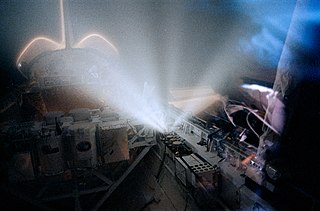
STS-39 was the twelfth mission of the NASA Space Shuttle Discovery, and the 40th orbital shuttle mission overall. The primary purpose of the mission was to conduct a variety of payload experiments for the U.S. Department of Defense (DoD).

STS-56 was a NASA Space Shuttle Discovery mission to perform special experiments. The mission was launched from Kennedy Space Center, Florida, on April 8, 1993.

STS-51 was a NASA Space Shuttle Discovery mission that launched the Advanced Communications Technology Satellite (ACTS) in September 1993. The flight also featured the deployment and retrieval of the SPAS-ORFEUS satellite and its IMAX camera, which captured spectacular footage of Discovery in space. A spacewalk was also performed during the mission to evaluate tools and techniques for the STS-61 Hubble Space Telescope (HST) servicing mission later that year. STS-51 was the first shuttle mission to fly a Global Positioning System (GPS) receiver, a Trimble TANS Quadrex. It was mounted in an overhead window where limited field of view (FoV) and signal attenuation from the glass severely impacted receiver performance. Full triple-redundant 3-string GPS would not happen until 14 years later with STS-118 in 2007.

STS-85 was a Space Shuttle Discovery mission to perform multiple space science packages. It was launched from Kennedy Space Center, Florida, on 7 August 1997. A major experiment was the CRISTA-SPAS free-flyer which had various telescopes on board.

Kent Vernon "Rommel" Rominger is an American former astronaut, former NASA Chief of the Astronaut Office at Johnson Space Center, and a captain in the United States Navy. Rominger holds the Space Shuttle Orbiter flight time record with 1610 hours. He joined ATK Launch Systems Group in 2006 as Vice President of Advanced Programs.

Norman Earl Thagard, is an American scientist and former U.S. Marine Corps officer and naval aviator and NASA astronaut. He is the first American to ride to space on board a Russian vehicle, and can be considered the first American cosmonaut. He did this on March 14, 1995, in the Soyuz TM-21 spacecraft for the Russian Mir-18 mission.

STS-66 was a Space Shuttle program mission that was flown by the Space Shuttle Atlantis. STS-66 launched on November 3, 1994, at 11:59:43.060 am EDT from Launch Pad 39-B at NASA's Kennedy Space Center. Atlantis landed at Edwards Air Force Base on November 14, 1994, at 10:33:45 am EST.
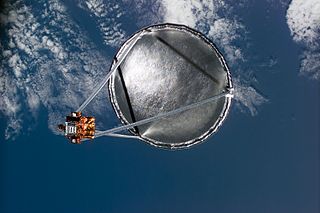
STS-77 was the 77th Space Shuttle mission and the 11th mission of the Space Shuttle Endeavour. The mission began from launch pad 39B from Kennedy Space Center, Florida on 19 May 1996 lasting 10 days and 40 minutes and completing 161 revolutions before landing on runway 33. The defense and aerospace technology company L'Garde was responsible for the design and manufacture of the Antenna in the Inflatable Antenna Experiment, a key component of the STS-77 mission.
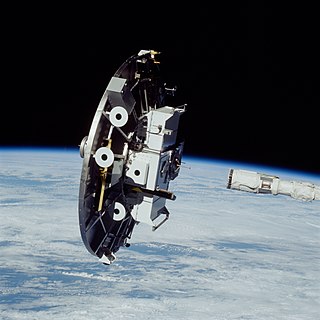
STS-80 was a Space Shuttle mission flown by Space Shuttle Columbia. The launch was originally scheduled for October 31, 1996, but was delayed to November 19 for several reasons. Likewise, the landing, which was originally scheduled for December 5, was pushed back to December 7 after bad weather prevented landing for two days.

STS-95 was a Space Shuttle mission launched from Kennedy Space Center, Florida on 29 October 1998, using the orbiter Discovery. It was the 25th flight of Discovery and the 92nd mission flown since the start of the Space Shuttle program in April 1981. It was a highly publicized mission due to former Project Mercury astronaut and United States Senator John H. Glenn Jr.'s return to space for his second space flight. At age 77, Glenn became the oldest person to go into space, a record that remained unbroken for 23 years until 82-year-old Wally Funk flew on a suborbital flight on Blue Origin NS-16, launching on 20 July 2021, which in turn was broken by William Shatner at age 90 on 13 October 2021. Glenn, however, remains the oldest person to reach Earth orbit. This mission is also noted for inaugurating ATSC HDTV broadcasting in the U.S., with live coast-to-coast coverage of the launch. In another first, Pedro Duque became the first Spaniard in space.

Daniel Wheeler Bursch is a former NASA astronaut, and Captain of the United States Navy. He had four spaceflights, the first three of which were Space Shuttle missions lasting 10 to 11 days each. His fourth and final spaceflight was a long-duration stay aboard the International Space Station as a crew member of Expedition 4, which lasted from December 2001 to June 2002. This 196-day mission set a new record for the longest duration spaceflight for an American astronaut, a record simultaneously set with his crew mate Carl Walz. Their record has since been broken, and as of 2016 it is held by Scott Kelly, who flew a 340-day mission during Expeditions 43, 44 and 45.

Gregory Jordan "Greg" Harbaugh is an aeronautical/astronautical engineer and former NASA astronaut. He flew on four space shuttle missions as a mission specialist with responsibilities that included Remote Manipulator System (RMS) operation and Extravehicular Activity (EVAs). He performed three spacewalks during the shuttle missions including in support of repair/refurbishment of the Hubble Space Telescope.
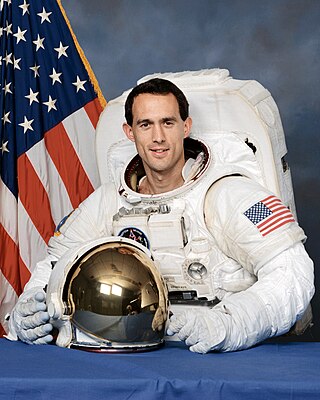
James Hansen Newman is an American physicist and a former NASA astronaut who flew on four Space Shuttle missions.
The Space Test Program (STP) is the primary provider of spaceflight for the United States Department of Defense (DoD) space science and technology community. STP is managed by a group within the Advanced Systems and Development Directorate, a directorate of the Space and Missile Systems Center of the United States Space Force. STP provides spaceflight via the International Space Station (ISS), piggybacks, secondary payloads and dedicated launch services.

Integrated Cargo Carrier (ICC) was a project, started in 1997 by the companies Spacehab and Airbus DS Space Systems, to develop a family of flight proven and certified cross-the-bay cargo carriers designed to fly inside the Space Shuttle cargo bay, installed either horizontally or vertically, and able to carry up to 8000 lbs. of unpressurized cargo into orbit. Airbus owns the ICC fleet of carriers.


